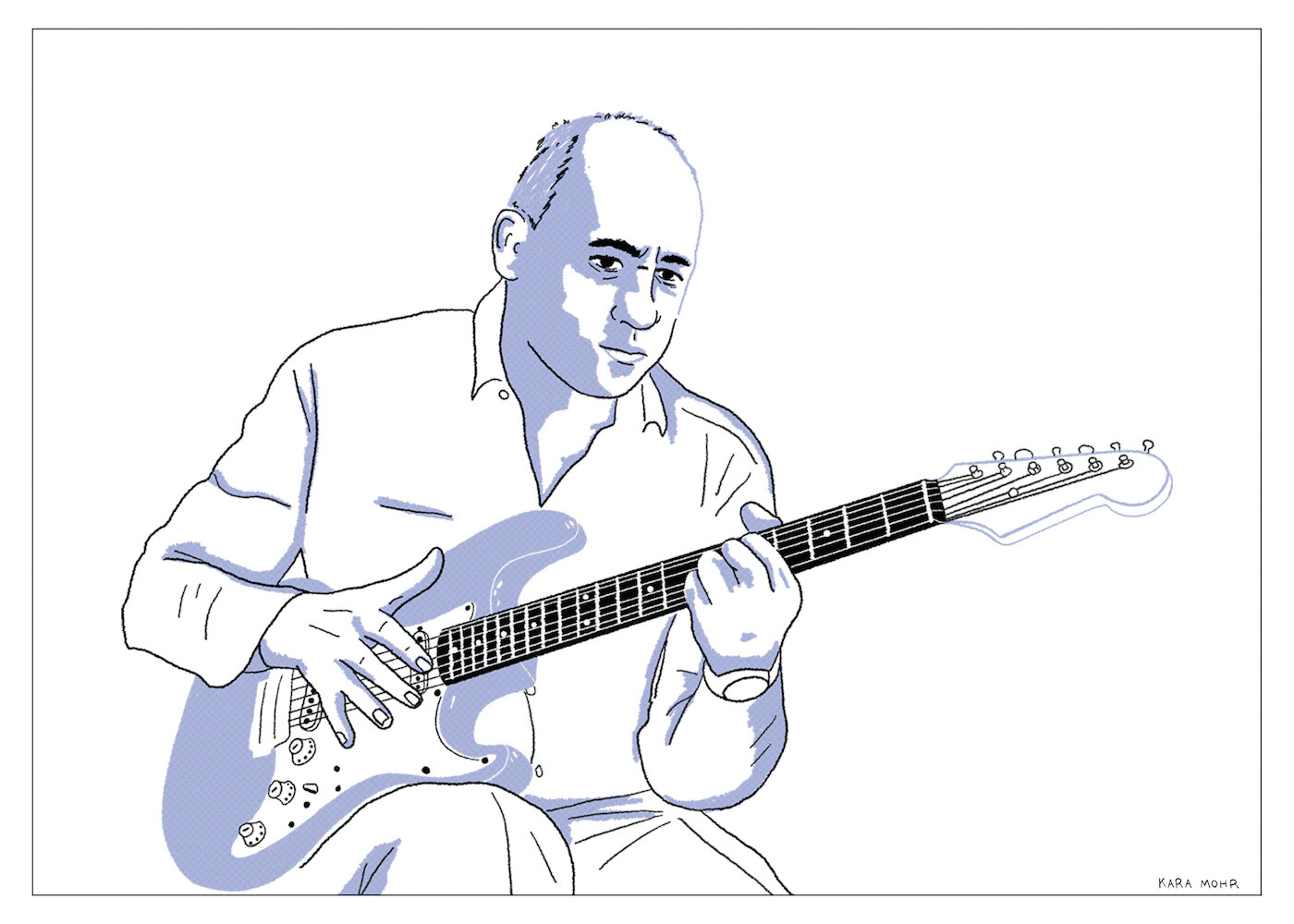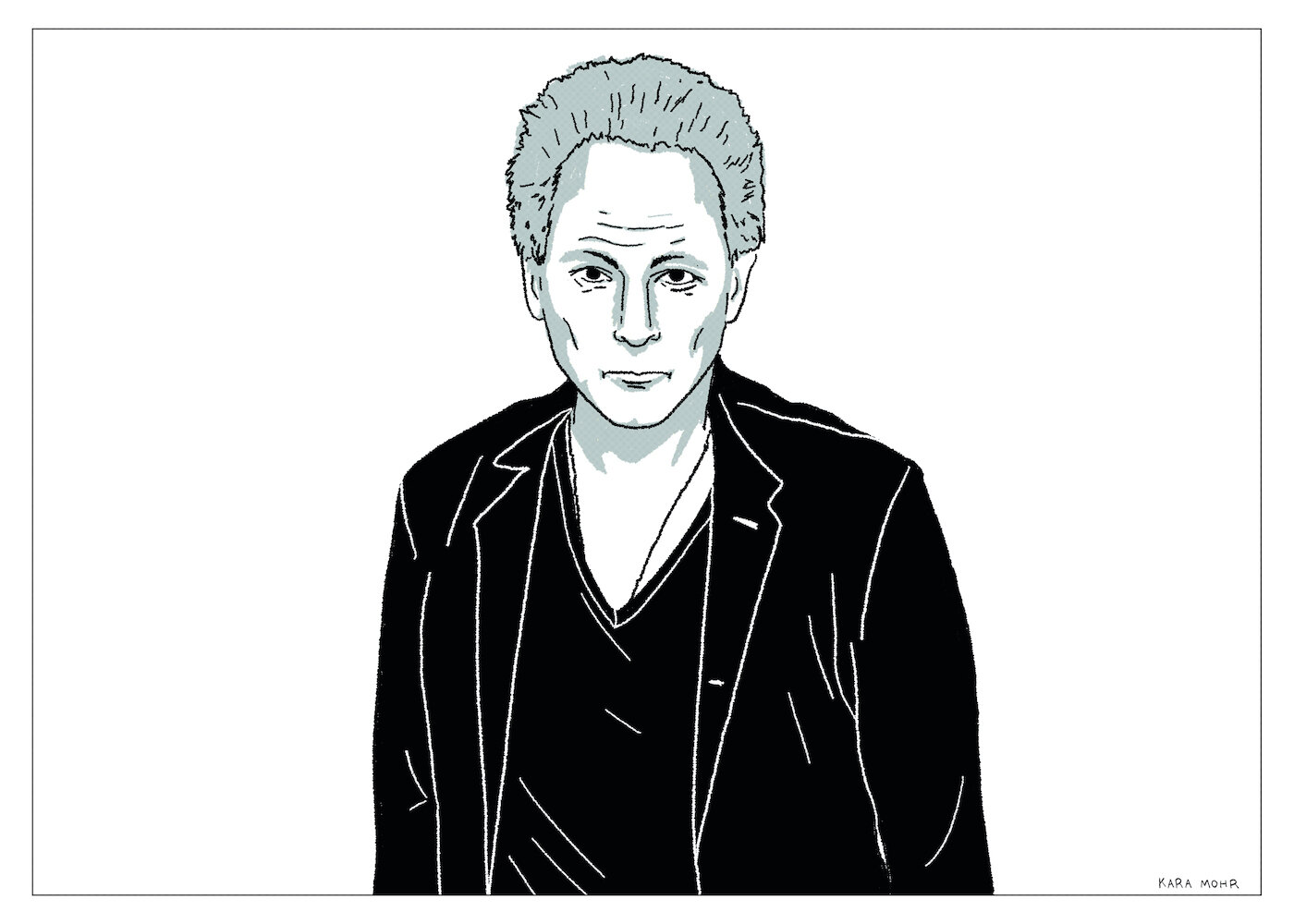
Nick Cave and The Bad Seeds “The Boatman’s Call”
“The Boatman’s Call” is the album wherein Nick Cave ascends from Art Punk poet, to spiritual Folk singer. “Murder Ballads,” considered a career apex at the time, came in 1996. Then, like a drenching storm, “The Boatman’s Call” arrived one year later and the band no longer sounded like it was playing in a back country Aussie church. No -- they sounded like they were playing in Nick Cave’s living room, on Persian rugs, watching the ocean, singing directly to you.

Mark Knopfler “Golden Heart”
By 1996, at age forty-seven, Mark Knopfler had resolved to slow everything down. He just didn’t want to be a Rock star any more. It was all kind of an accident to begin with. So, he disbanded Dire Straits. He wanted a slower, simpler life, befitting his middle age. However, Knopfler had two major problems. The first was that fans and filmmakers still wanted his songs. The second was that songs just poured out from him. So, what do you do when your blessing has become your curse?

Levon Helm “American Son”
Levon Helm already had a lot of miles on him by 1980. Over the ensuing thirty years, he would travel fewer miles, but the wear and tear would still be great. The man who could drum and sing like no other suffered physically, financially and personally. He battled cancer. He battled his bandmate. He settled in Woodstock. Lost in his rich and complex story is “American Son,” the out of print, raucous, joyous, flawed album that is hard to think about but so easy to feel.

Elton John “The One”
In 1992, Elton John was newly sober, pre-Lion King and still writing the preface to his second act. When I hear “The One” I wonder what would have happened if, that year, Sir Elton simply decided to be a songwriter and band leader. What if he wrote the great songs and led the band from his piano, but allowed his friends and admirers lend their voices and vigor? Because, here’s the thing about Reginald, Elton, Captain Fantastic and Sir Elton — they all wrote great songs. But, they just didn’t always know what to do with them.

Lindsey Buckingham “Under the Skin”
Lindsey Buckingham’s fourth solo album opens up in therapy, mid dream interpretation. Under his trademark finger-picking guitar style is a hushed confession about feeling unseen. It’s a great irony considering just how “seen” this musician has been. However, where his bandmate and one-time romantic partner Stevie Nicks conjured her great solo career with a witchy twist of the wrist, Buckingham had more trouble. There was something pent up in him. What was it?

Donald Fagen “Morph the Cat”
I had successfully avoided my Steely Dan reckoning for decades. But, every five years, there would be another drip. A friend would ask my position — pro or con? Another might ask if I’d heard Donald Fagen’s latest solo record. Drip. Drip. It was torture. And so, in 2020, I resolved to kind of, sort of, take on The Dan. I dipped a toe into the cool water of Fagen’s solo album “Morph the Cat.” Everything I feared and hoped for was right there.

Darryl Hall “Three Hearts in the Happy Ending Machine”
Darryl Hall was born to sing. By 1986, much of the world knew this. What we didn’t know is if he could produce hits without John Oates or if he could make a great solo album. That year, the charts were filled with Contemporary Soul and R&B -- Whitney Houston and Lionel Richie. The pop charts in 1986 were not the realm of the young. So, at forty years old, conditions were quite ripe for Darryl Hall’s solo record, “Three Hearts in the Happy Ending Machine.”

Leonard Cohen “Various Positions”
In 1984 Leonard Cohen released “Various Positions.” It was his first album to substantially use the Casio keyboard. It is also the first wherein Jennifer Warnes is billed as “co-singer.” At fifty years old, with Cohen’s voice bottoming out, his soul sounded like it was one hundred. Plus, the curious new sound was greeted with cynicism by Cohen’s label. Turns out, the label was wrong. “Various Positions” not only gave us “Hallelujah,” it also crystallized the sound that would become the hallmark of Cohen’s extraordinary third act.

John Mellencamp “Mr. Happy Go Lucky”
He gave us so much. He gave us “Jack and Diane,” “Hurts So Good” and “Pink Houses.” But then, in 1994, he gave us all a little scare when his four pack a day habit caught up with him. He was forty three, had a hell of a run on the charts and married a super model. It seemed like it might be the end. But then, in 1996, stripped of bravado, Mellencamp returned to the heartland between Americana and what would eventually be the sound Matchbox 20.

William Patrick Corgan “Ogilala”
On “Ogilala,” Rick Rubin brings his rich, if familiar, bag of tricks to the middle-aged, curious and misunderstood singer and songwriter. The album is a prestige piece. It’s like when Annie Lebowitz shoots a movie star at fifty for Vanity Fair and shows their lines, their age, their greys and their natural beauty. In that very same way, this record is quite beautiful. But, also in that same way, it’s a lot of work. And its sum is probably greater than its parts.

Willie Nelson “Always On My Mind”
Something happened with Willie in the 80s. It’s hard to know if it was a creative choice or exhaustion or age or a dry spell. Or none of the above. Maybe it was Reagan. Country music had gotten wind-swept into the realm of Adult Contemporary. The wind carried most everyone in this direction — Kenny Rogers, Dolly Parton, Eddie Rabbit and Conway Twitty all got nudged to the right by this wind. And, yes, so did Willie.

Elvis Costello “Painted from Memory”
He was a nerd’s hero -- a smarty-pants who somehow became cool despite the glasses. But intelligence can become a block from emotional connection. Seething is a young man’s game. Costello was reaching down into the tradition of popular song for fuel. Burt Bacharach came from the era when it was more of a job and less of a revolution. Costello had street cred more than hits. Bacharach had hits more than street cred. They both needed each other.

Roger Daltrey “Under a Raging Moon”
Roger Daltrey didn’t write the songs. He didn’t need to play a lead instrument. He wasn’t going to make the mistake Rod Stewart made, thinking he was an artist just because he could sing. Pete was the artist and he was the front man. And it worked. Roger Daltrey stayed in his lane — at least until 1985. That year, Roger Daltrey released a solo album that I am certain is really the soundtrack to a straight to video, erotic action thriller. There’s no other logical explanation for at least half of this record.

Peter Gabriel ”Up”
Gabriel was not known for his balance. His first four untitled solo album covers feature a distortion of his face to let you know he was a little intense. But, if you listened closely, he started opening up more. First, he empathized with Stephen Biko, a real life political dissident. Then he even started empathizing with regular people, culminating in his commercial breakthrough album, “So.” But Gabriel still had a long way to go from his first solo album where he thought a song called “Moribund the Burgermeister” was a good idea.

Elvis Presley “Moody Blue”
Elvis wore the white jumpsuit on stage for seven straight years. It flexed with his changing size. If it didn’t, he got one that did. He was the first rock star and the original past prime poster boy. He was only 42 when he died in 1977, but in the cultural memory he was a bloated, pill popping monster who died on the toilet. It was really not long ago that he was just the boy from Tupelo. The one who didn’t like to perform in public but had the golden voice.

Richard Thompson “Rumor and Sigh”
If there has ever been an artist who completely sustained their prime for an entire career, it is Richard Thompson. His highs are not as high as Dylan’s. And his finest records are not perfect in the way that, say, “Astral Weeks” is. But while his peaks are not as high, his consistency is almost unprecedented. What is the “best” Richard Thompson album? Was it 1974s “I Want to See the Bright Lights Tonight”? Was it 1982s “Shoot Out The Lights”? 1999s “Mock Tudor”? Or was it, as many would say, 1991s “Rumor and Sigh”?

David Lee Roth “Your Filthy Little Mouth”
Any way I looked at it, the road led here. I couldn’t just go on listening to the tasteful, critically correct middle-aged stuff, could I? No. I knew at some point soon, that I’d have to eat the dog food. And so, last night, with genuine trepidation, I pressed play on David Lee Roth’s 1994 album, “Your Filthy Little Mouth.” Spanning metal, jazz, cabaret, reggae (don’t ask) and blues, the album is equally ambitious, aimless, slick, cheap, loud, fun, boring, safe and a complete mess.

Bryan Ferry “Bête Noire”
Can something be too refined? When you whittle and whittle endlessly, what becomes of the original thing? Bryan Ferry is nothing, if not refined. He presaged everything from Sade to The National. And he was so good, for so long, that we often take his music for granted. Today, the notion of Bryan Ferry is as much a cover photo on Italian Vogue as it is his music. And that is probably a result of all that damn whittling.

Paul Westerberg “Folker”
Westerberg solo and sober had difficulty finding his voice. When he rocked with expensive producers he sounded like watered down Replacements. When he switched to a piano and tried to be a singer songwriter, he sounded like a morose Carole King. Fans began to move on. But then, something happened. The malcontent outcast found his voice again. “Folker” is desperate middle-aged music. Also-ran music. Music about regret and compromise. Music written from your knees.

Frank Black “Honeycomb”
In 2005, nearly twenty years after he founded The Pixies, a whole bunch of shit happened to Frank Black. The Pixies simply could not work together and cancelled a tour. And, sadly, his marriage of sixteen years ended. So, Frank Black went into therapy to figure out what he needed to do. The “what” apparently was to head to Nashville, assemble a group of legendary session players, and finally record his “Black on Blonde” record.
